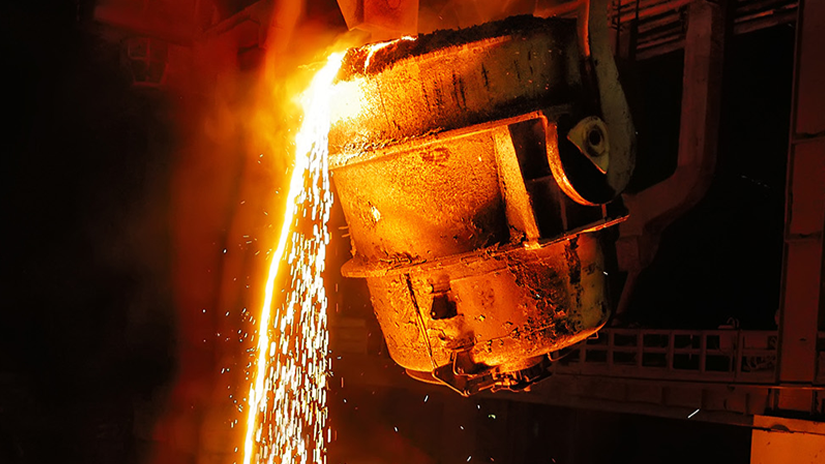
Stainless steel is the backbone of so many Australian industries – but do you really know what you are buying?
Australian industries and stainless steel share an enduring partnership. With its ability to stand up to the elements, stainless steel will forever be part of our old and emerging industries.
Due to its strong corrosion resistance, durability, and ability to be thoroughly cleaned, disinfected, and sterilised safely without degradation, stainless steel products are used across various industries, including medical, automotive, food processing, industrial and mining.
Stainless steel’s endurance, low maintenance costs, longevity, and highly recyclable content ensure a highly cost-effective and environmentally friendly solution.
Not all stainless steel is created equal
Australia’s most common stainless steel is austenitic grades 304 and 316, with perfect temperature, workability, corrosion resistance and non-magnetism once annealed.
Additionally, low-carbon varieties 304L and 316L are critical in press-fit piping systems due to their greater malleability for fitting and tube press strength and reliability.
For these reasons, austenitic stainless steels are the preferred material for industrial piping systems. However, while a product may be stamped as 304 or 316 stainless steel, the quality of the product is affected significantly by the quality of the raw materials and the manufacturing process.
Europe as a region produces some of the highest quality stainless steel in the world (along with Japan and North America). This reputation has been built on strict quality controls, a focus on sustainable manufacturing practices and the use of superior base materials.
However, when sourcing products, price-conscious consumers can overlook these factors when far removed from the manufacturing process.
Why is European stainless steel so highly regarded?
European austenitic stainless steel is produced from a homogeneous mixture of refined steel and pure nickel and chromium that ensures a product of exceptional quality. This is contrasted by other region’s use of nickel-pig-iron, made from low-quality nickel ore, coking coal, and assorted aggregates, with impurities separated though the smelting process. The absence of pure base materials is problematic as it can lead to corrosion and spotting, as each product is not guaranteed to have a consistent blend of materials.
The differences in stainless steel quality present a challenge for the buyer. At first glance the product may appear of similar quality, yet, over the course of the product’s life, the purer materials will have far greater longevity, ultimately providing a better and more cost-effective design solution. The product made from polluted materials could leave a project exposed to potential product faults, leading to maintenance issues and downtime.
Where is your stainless steel manufactured? Don’t be misled!
Advanced supply chains have allowed Australian companies to source products from across the globe and repurpose them for our local market, giving Australian consumers access to more choices.
As the flow of goods around the globe has become easier, it has led to some companies being misled regarding the origin of their products.
One example is the often used ‘Designed in Europe’ badge, leading consumers to assume this product is of European origin and therefore associate it with European quality. However, this can be misleading as products using this type of advertising are often manufactured in locations known for using low-quality raw materials.
This is an issue as few rules regulate where a product is claimed to be designed. This is contrasted with the strict rules governing transparency around the manufacturing country’s origin. This dishonest messaging can expose consumers to risk.
Making sure stainless steel products are the real deal
Original mill certificates reveal to the buyer the exact location the product is manufactured, the chemical composition proving the stainless steel grade (for example 316) and provide traceability of the raw materials.
All genuine mill certificates clearly identify:
Name of Mill
Material Heat Number
Material Grade
Specific Heat Treatment
Material Dimensions
Certified Mill Signature
Fake mill certificates have been increasing in the Australian market in recent years, so consumers are encouraged to conduct their own research to ensure the mill referenced on the document exists and to contact the mill to confirm that the plate and heat numbers are correct.
It is also recommended that consumers request original mill certificates, particularly when evaluating competing product ranges. This allows the buyer to ensure they are comparing like-for-like products and may help to explain the price differences between a product ‘Designed in Europe’ yet sourced from a region with less rigorous manufacturing processes.
Stainless steel is a critical component in many industrial projects and is used for its performance and durability. However, these advantages can be offset by poor manufacturing processes. To ensure that you are receiving the quality you believe you are paying for, and to avoid the integrity of your next project being compromised, it pays to ask for proof of where the materials are manufactured.











